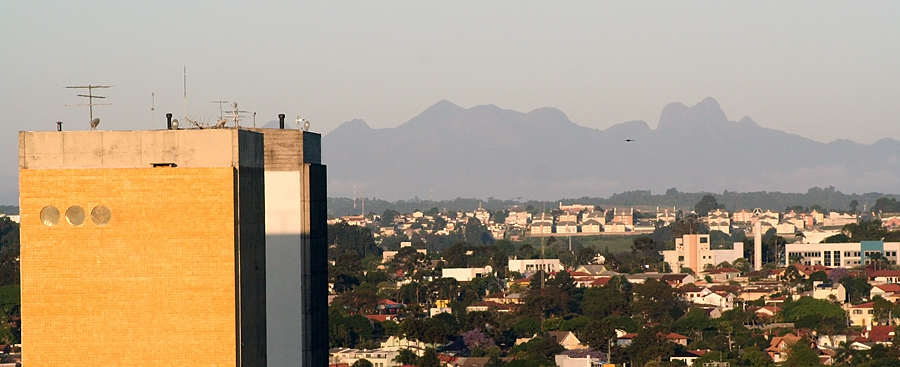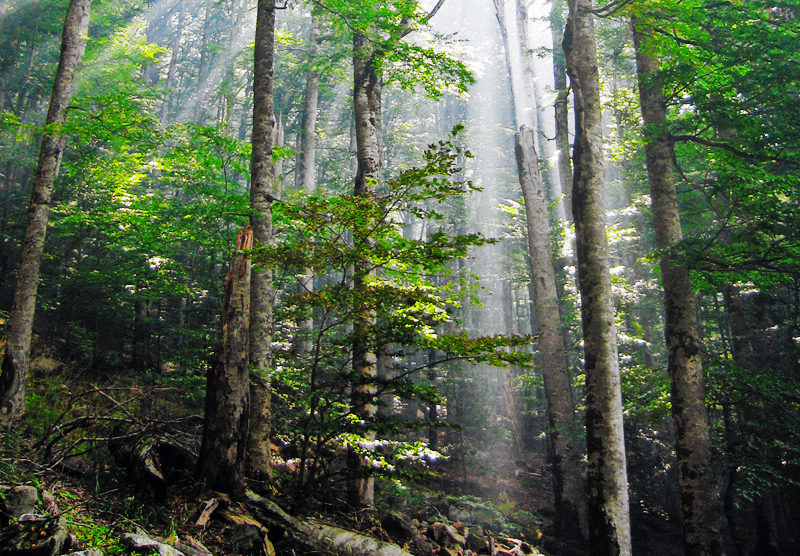|
Paratelmatobius Poecilogaster
''Paratelmatobius poecilogaster'' is a species of frog in the family Leptodactylidae. It is endemic to the Serra do Mar range, Brazil. It is a terrestrial frog found near small temporary streams inside primary forest. The eggs are laid in small ponds at the edges of the temporary streams. Though the known populations are known from inside protected areas, it is likely to be threatened by habitat loss Habitat destruction (also termed habitat loss and habitat reduction) is the process by which a natural habitat becomes incapable of supporting its native species. The organisms that previously inhabited the site are displaced or dead, thereby ... outside those areas. References poecilogaster Endemic fauna of Brazil Amphibians of Brazil Amphibians described in 1990 Taxonomy articles created by Polbot {{Leptodactylidae-stub ... [...More Info...] [...Related Items...] OR: [Wikipedia] [Google] [Baidu] |
Frog
A frog is any member of a diverse and largely carnivorous group of short-bodied, tailless amphibians composing the order Anura (ανοὐρά, literally ''without tail'' in Ancient Greek). The oldest fossil "proto-frog" '' Triadobatrachus'' is known from the Early Triassic of Madagascar, but molecular clock dating suggests their split from other amphibians may extend further back to the Permian, 265 million years ago. Frogs are widely distributed, ranging from the tropics to subarctic regions, but the greatest concentration of species diversity is in tropical rainforest. Frogs account for around 88% of extant amphibian species. They are also one of the five most diverse vertebrate orders. Warty frog species tend to be called toads, but the distinction between frogs and toads is informal, not from taxonomy or evolutionary history. An adult frog has a stout body, protruding eyes, anteriorly-attached tongue, limbs folded underneath, and no tail (the tail of tailed frogs ... [...More Info...] [...Related Items...] OR: [Wikipedia] [Google] [Baidu] |
Leptodactylidae
The southern frogs form the Leptodactylidae, a name that comes from Greek meaning a bird or other animal having slender toes. They are a diverse family of frogs that most likely diverged from other hyloids during the Cretaceous. The family has undergone major taxonomic revisions in recent years, including the reclassification of the former subfamily Eleutherodactylinae into its own family the Eleutherodactylidae; the Leptodactylidae now number 206 species in 15 genera distributed throughout Mexico, the Caribbean, and Central and South America. The family includes terrestrial, burrowing, aquatic, and arboreal members, inhabiting a wide range of habitats. Several of the genera within the Leptodactylidae lay their eggs in foam nests. These can be in crevices, on the surface of water, or on forest floors. These foam nests are some of the most varied among frogs. When eggs hatch in nests on the forest floor, the tadpoles remain within the nest, without eating, until metamorphosis. ... [...More Info...] [...Related Items...] OR: [Wikipedia] [Google] [Baidu] |
Endemism
Endemism is the state of a species being found in a single defined geographic location, such as an island, state, nation, country or other defined zone; organisms that are indigenous to a place are not endemic to it if they are also found elsewhere. For example, the Cape sugarbird is found exclusively in southwestern South Africa and is therefore said to be ''endemic'' to that particular part of the world. An endemic species can be also be referred to as an ''endemism'' or in scientific literature as an ''endemite''. For example ''Cytisus aeolicus'' is an endemite of the Italian flora. ''Adzharia renschi'' was once believed to be an endemite of the Caucasus, but it was later discovered to be a non-indigenous species from South America belonging to a different genus. The extreme opposite of an endemic species is one with a cosmopolitan distribution, having a global or widespread range. A rare alternative term for a species that is endemic is "precinctive", which applies t ... [...More Info...] [...Related Items...] OR: [Wikipedia] [Google] [Baidu] |
Serra Do Mar
The Serra do Mar (, Portuguese for ''Sea's Ridge'' or ''Sea Ridge'') is a 1,500 km long system of mountain ranges and escarpments in Southeastern Brazil. Geography The Serra do Mar runs parallel to the Atlantic Ocean coast from the state of Espírito Santo to southern Santa Catarina,Angulo, R. J., G. C. Lessa, M. C. de Souza (2009). ''The Holocene Barrier Systems of Paranaguá and Northern Santa Catarina Coasts, Southern Brazil.'' Lecture Notes in Earth Sciences 107: 135-176. although some literature includes the Serra Geral in the Serra do Mar, in which case the range would extend to northeastern Rio Grande do Sul. The main escarpment forms the boundary between the sea-level littoral and the inland plateau (''planalto''), which has a mean altitude of . This escarpment is part of the Great Escarpment that runs along much of the eastern coast of Brazil south from the city of Salvador, Bahia. Mountain ranges The mountain ranges are discontinuous in several places and are ... [...More Info...] [...Related Items...] OR: [Wikipedia] [Google] [Baidu] |
Brazil
Brazil ( pt, Brasil; ), officially the Federative Republic of Brazil (Portuguese: ), is the largest country in both South America and Latin America. At and with over 217 million people, Brazil is the world's fifth-largest country by area and the seventh most populous. Its capital is Brasília, and its most populous city is São Paulo. The federation is composed of the union of the 26 states and the Federal District. It is the largest country to have Portuguese as an official language and the only one in the Americas; one of the most multicultural and ethnically diverse nations, due to over a century of mass immigration from around the world; and the most populous Roman Catholic-majority country. Bounded by the Atlantic Ocean on the east, Brazil has a coastline of . It borders all other countries and territories in South America except Ecuador and Chile and covers roughly half of the continent's land area. Its Amazon basin includes a vast tropical forest, ho ... [...More Info...] [...Related Items...] OR: [Wikipedia] [Google] [Baidu] |
Old-growth Forest
An old-growth forestalso termed primary forest, virgin forest, late seral forest, primeval forest, or first-growth forestis a forest that has attained great age without significant disturbance, and thereby exhibits unique ecological features, and might be classified as a climax community. The Food and Agriculture Organization of the United Nations defines primary forests as naturally regenerated forests of native tree species where there are no clearly visible indications of human activity and the ecological processes are not significantly disturbed. More than one-third (34 percent) of the world's forests are primary forests. Old-growth features include diverse tree-related structures that provide diverse wildlife habitat that increases the biodiversity of the forested ecosystem. Virgin or first-growth forests are old-growth forests that have never been logged. The concept of diverse tree structure includes multi-layered canopies and canopy gaps, greatly varying tree heig ... [...More Info...] [...Related Items...] OR: [Wikipedia] [Google] [Baidu] |
Habitat Loss
Habitat destruction (also termed habitat loss and habitat reduction) is the process by which a natural habitat becomes incapable of supporting its native species. The organisms that previously inhabited the site are displaced or dead, thereby reducing biodiversity and species abundance. Habitat destruction is the leading cause of biodiversity loss. Fragmentation and loss of habitat have become one of the most important topics of research in ecology as they are major threats to the survival of endangered species. Activities such as harvesting natural resources, industrial production and urbanization are human contributions to habitat destruction. Pressure from agriculture is the principal human cause. Some others include mining, logging, trawling, and urban sprawl. Habitat destruction is currently considered the primary cause of species extinction worldwide. Environmental factors can contribute to habitat destruction more indirectly. Geological processes, climate change, ... [...More Info...] [...Related Items...] OR: [Wikipedia] [Google] [Baidu] |
Paratelmatobius
''Paratelmatobius'' is a genus of frogs in the family Leptodactylidae. They are endemic to southern Brazil. Species The following species are recognised in the genus ''Paratelmatobius '': AmphibiaWeb also lists ''Paratelmatobius pictiventris'', but Amphibian Species of the World considers it a synonym of ''Paratelmatobius gaigeae ''Paratelmatobius gaigeae'' (common name: Gaige's rapids frog) is a species of frog in the family Leptodactylidae. It is endemic to Serra da Bocaina, a part of Serra do Mar, southeastern Brazil. ''Paratelmatobius gaigeae'' is named after Helen B ...''. References Leptodactylidae Amphibians of South America Endemic fauna of Brazil Amphibian genera Taxa named by Bertha Lutz Taxonomy articles created by Polbot {{Leptodactylidae-stub ... [...More Info...] [...Related Items...] OR: [Wikipedia] [Google] [Baidu] |
Endemic Fauna Of Brazil
Endemism is the state of a species being found in a single defined geographic location, such as an island, state, nation, country or other defined zone; organisms that are indigenous to a place are not endemic to it if they are also found elsewhere. For example, the Cape sugarbird is found exclusively in southwestern South Africa and is therefore said to be ''endemic'' to that particular part of the world. An endemic species can be also be referred to as an ''endemism'' or in scientific literature as an ''endemite''. For example ''Cytisus aeolicus'' is an endemite of the Italian flora. ''Adzharia renschi'' was once believed to be an endemite of the Caucasus, but it was later discovered to be a non-indigenous species from South America belonging to a different genus. The extreme opposite of an endemic species is one with a cosmopolitan distribution, having a global or widespread range. A rare alternative term for a species that is endemic is "precinctive", which applies to s ... [...More Info...] [...Related Items...] OR: [Wikipedia] [Google] [Baidu] |
Amphibians Of Brazil
Amphibians are four-limbed and ectothermic vertebrates of the class Amphibia. All living amphibians belong to the group Lissamphibia. They inhabit a wide variety of habitats, with most species living within terrestrial, fossorial, arboreal or freshwater aquatic ecosystems. Thus amphibians typically start out as larvae living in water, but some species have developed behavioural adaptations to bypass this. The young generally undergo metamorphosis from larva with gills to an adult air-breathing form with lungs. Amphibians use their skin as a secondary respiratory surface and some small terrestrial salamanders and frogs lack lungs and rely entirely on their skin. They are superficially similar to reptiles like lizards but, along with mammals and birds, reptiles are amniotes and do not require water bodies in which to breed. With their complex reproductive needs and permeable skins, amphibians are often ecological indicators; in recent decades there has been a dramatic de ... [...More Info...] [...Related Items...] OR: [Wikipedia] [Google] [Baidu] |
_Ranomafana.jpg)
.jpg)



.png)